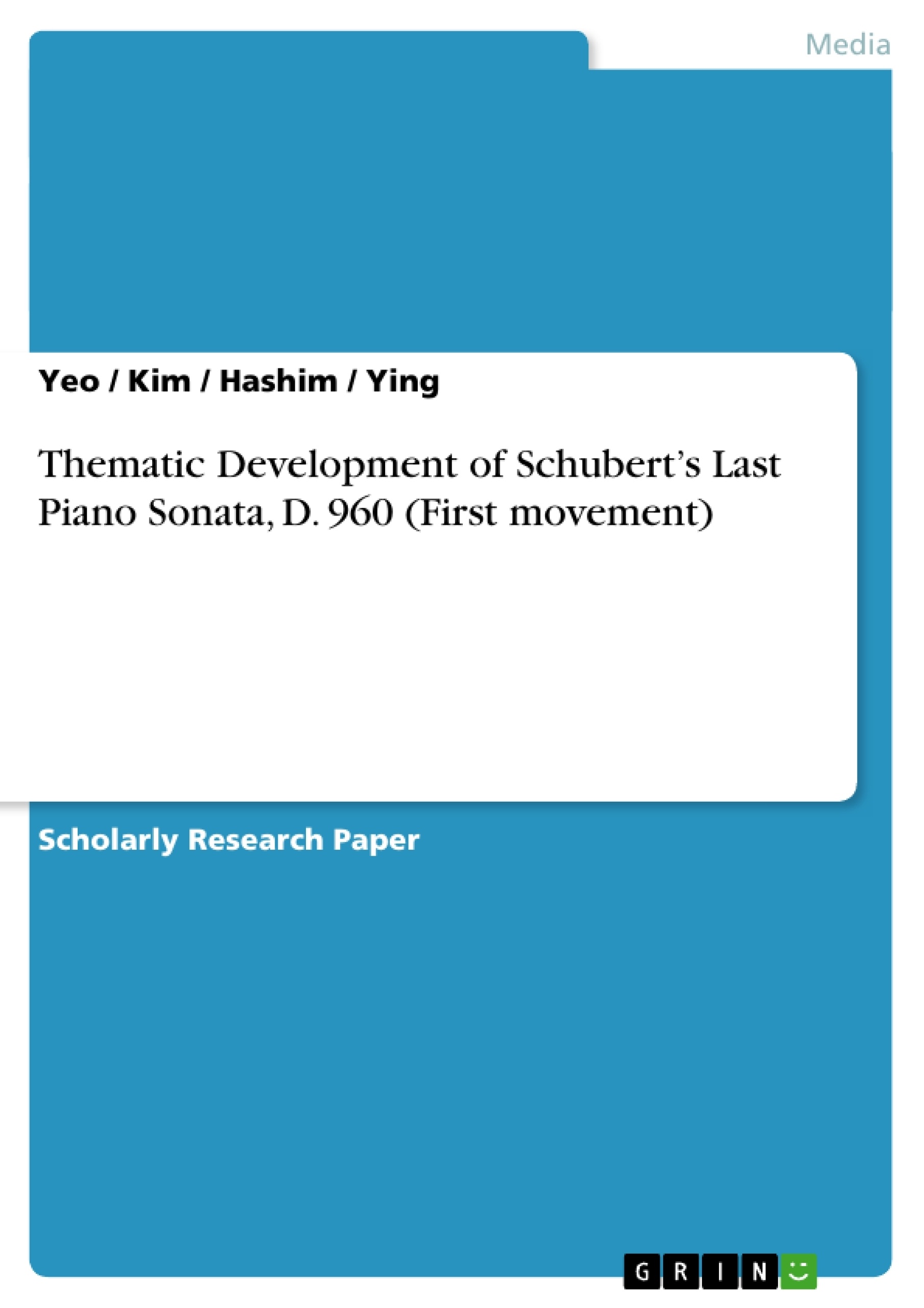Franz Schubert’ last piano sonata, D. 960 in Bb Major by was written in 1828 (published in 1839), shortly after Beethoven’s death -- he died in 1827. According to Robert Winter, Beethoven was the most influential composer for Franz Schubert. Schubert’s sonatas, in particular, were modeled on Beethoven’s in terms of form and structure. This last sonata is one of Schubert’s popular sonatas, and is often performed. It also has been frequently criticized because of the unusual aspects of its sonata form. Winter has described the last sonata as, “suffused by the composer’s characteristic melancholy, mingled with a feeling of contemplative ecstasy. The stepwise elegiac opening alternates with disembodied trills in the bass, leading to remote keys, notably f# minor, before the exposition is over.” This paper will discuss the following aspects of the first movement -- the form, the key schemes, and the development of themes.
Inhaltsverzeichnis (Table of Contents)
- I. Introduction
- II. Contents
- A. Biography
- B. Sonata form
- C. Analysis
- 1) Structure
- 2) Tonality
- III. Conclusion
Zielsetzung und Themenschwerpunkte (Objectives and Key Themes)
This paper examines the first movement of Schubert's last piano sonata, D. 960, focusing on its form, key schemes, and thematic development. It explores how Schubert's work was influenced by Beethoven and delves into the unique aspects of the sonata form in this piece.
- Influence of Beethoven on Schubert's sonata writing
- Analysis of the sonata form in Schubert's D. 960, particularly the first movement
- Exploration of the key schemes and thematic development within the first movement
- Interpretation of the melancholic and contemplative nature of the sonata
- Examination of the unique characteristics of the sonata form in this piece
Zusammenfassung der Kapitel (Chapter Summaries)
- I. Introduction: This chapter introduces Schubert's last piano sonata, D. 960, providing context for its creation and discussing its significance in Schubert's oeuvre. It highlights the influence of Beethoven on Schubert's music and the unconventional aspects of the sonata form in this piece.
- II. Contents:
- A. Biography: This section provides a brief biographical sketch of Franz Schubert, highlighting his musical background and career.
- B. Sonata form: This section discusses the traditional sonata form in the classical period and explains the basic components, such as the exposition, development, and recapitulation. It also highlights the contributions of Haydn and Mozart to the development of the sonata form.
- C. Analysis: This section focuses on the specific analysis of the first movement of D. 960, covering aspects such as structure and tonality.
Schlüsselwörter (Keywords)
The main keywords and focus topics of this paper include Franz Schubert, piano sonata, D. 960, sonata form, thematic development, key schemes, influence of Beethoven, melancholic, contemplative, and unconventional aspects of sonata form.
- Quote paper
- Associate Professor, Dr. Yeo (Author), Dr. Kim (Author), Dr. Hashim (Author), Dr. Ying (Author), 2009, Thematic Development of Schubert’s Last Piano Sonata, D. 960 (First movement), Munich, GRIN Verlag, https://www.grin.com/document/141339




